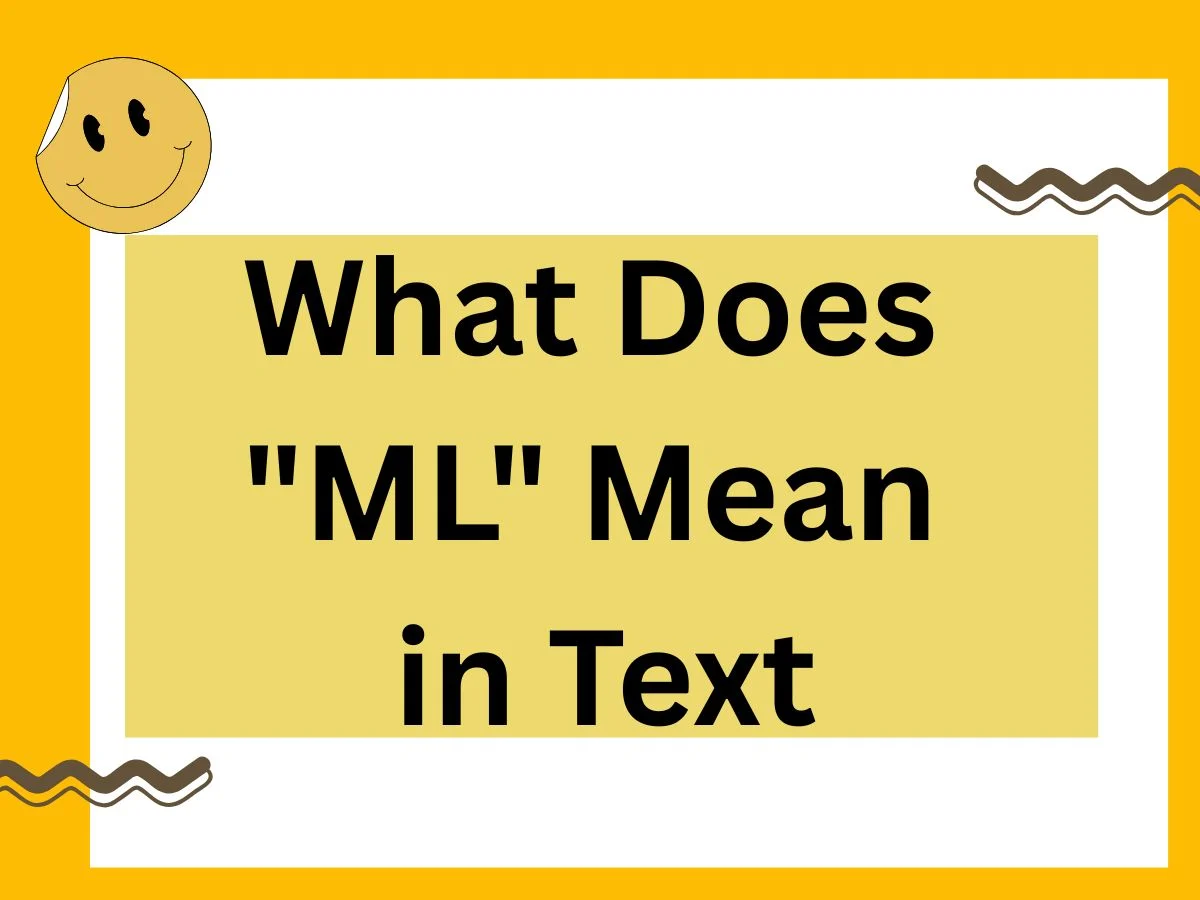📌 Why Every Letter Counts in the Digital Age
🔥 Rizz Line Generator 🔥
In 2025, texting has become far more than just shorthand communication. It’s a language of its own—a hybrid of expression, emotion, intention, and identity. Whether you’re chatting on Threads, replying to a comment on TikTok, or sliding into someone’s DMs on Snapchat, every abbreviation carries weight. One such term—short and mysterious—is “ML.”
While it might look like an innocent pair of letters, ML has evolved into a term with multiple meanings, cultural layers, and context-driven interpretations. You’ve probably seen it in a text or social post and paused: “What does ML mean in this context?”
Let’s unravel it once and for all.
🧠 What Does “ML” Mean in a Text Message in 2025?
The primary meaning of ML in text messages is:
Much Love
This usage expresses affection, kindness, or emotional closeness—similar to how one might say “love ya” or “sending hugs.”
Example:
- “Thanks for checking in. ML ❤️”
- “Goodnight! ML, talk soon.”
But that’s only one layer of its meaning in 2025.
🧬 The Expanding Scope of “ML” – Multiple Interpretations in 2025
1. Much Love – The most common and emotional use.
Used between friends, family members, or even online followers. It’s warm, brief, and non-romantic in most cases.
2. My Love – Romantic or flirty context.
This meaning is used between partners or people in a flirtatious dynamic.
- “Missing you, ML 😘”
3. Machine Learning – In tech, AI, and business discussions.
Used in professional or academic chats when referring to AI/ML tech topics.
- “We’re integrating ML into our new app.”
4. Major Loss – Rare, but used in emotional or sports conversations.
Used when someone is referring to a big failure or emotional setback.
- “Damn, losing that deal was an ML.”
5. Mobile Legends – Among gamers (especially in SEA regions).
ML refers to the popular mobile MOBA game.
- “You online tonight for ML?”
6. Money Line – In betting and finance lingo.
Used in sports gambling and prediction platforms.
- “ML on Lakers tonight?”
⚠️ Why the Meaning of “ML” Depends Entirely on Context
As of 2025, the number of digital platforms where language evolves daily has made acronyms like ML heavily context-dependent. This is exactly why “ML” can mean “Much Love” in one sentence and “Machine Learning” in another—without either being technically wrong.
Ask Yourself:
- Who sent it?
- What platform?
- What was the conversation topic?
- What tone is being used?
Example Scenarios:
- Your best friend texts you “ML” → 99% chance = Much Love.
- Your tech co-worker texts “ML” → Almost certainly = Machine Learning.
- A romantic partner says “goodnight ML” → Likely = My Love.
💬 How “ML” Has Evolved in 2025 Compared to Earlier Years
In 2020, ML was heavily weighted toward “Machine Learning” or “Much Love” depending on context. But since 2023–2025, it’s become:
- More emotionally loaded in Gen Z and Alpha conversations.
- More ironic or meme-based, sometimes used sarcastically.
- Embedded into voice-to-text platforms, where abbreviations are spoken aloud (yes, people say “Em-El” now!).
This evolution means that if you’re using ML today, you’re either:
- Being kind and affectionate,
- Trying to sound cool and cryptic, or
- Referring to AI—and hoping people know which one.
🧭 When to Use “ML” – And When Not To
Knowing when and where to use “ML” could be the difference between sounding modern or completely confusing someone.
✅ Use “ML” When:
- Texting friends or loved ones casually.
- Signing off a casual conversation.
- Expressing positive emotions.
- Engaging with Gen Z/Alpha culture.
- Commenting on social media posts (esp. when space is limited).
❌ Avoid “ML” When:
- Messaging your boss or in professional settings (unless talking about machine learning).
- Talking to someone not familiar with slang or digital lingo.
- The meaning could be misinterpreted (especially across cultures).
🛠️ Alternatives to “ML” – 10 Expert-Level Options by Tone & Context
If you want to avoid confusion, or you’re trying to be more thoughtful, expressive, or formal, here are 10 superior alternatives to “ML,” each with ideal usage cases and examples.
1. With Love
✅ Formal + Warm
Use when ending an email, card, or meaningful message.
Example:
“Thanks for everything you’ve done. With love, Hannah.”
2. Take Care
✅ Safe + Polite
Use when ending a convo with acquaintances or online contacts.
Example:
“It was great chatting with you. Take care!”
3. All My Love
✅ Emotional + Romantic
Use when speaking deeply to someone close.
Example:
“I miss you so much. All my love, always.”
4. Sending Love
✅ Supportive + Soft
Use when offering comfort or encouragement.
Example:
“Heard about what happened—sending love 💖.”
5. Much Respect
✅ Cool + Confident
Use when showing admiration in a laid-back way.
Example:
“You stood your ground. Much respect, bro.”
6. Big Hug
✅ Affectionate + Friendly
Use when trying to sound warm without being too emotional.
Example:
“You got this!! Big hug 💪🤗.”
7. Warm Regards
✅ Professional + Friendly
Use when closing formal messages while remaining warm.
Example:
“I’ve attached the invoice. Warm regards, Liam.”
8. Peace & Love
✅ Trendy + Soothing
Use when connecting with a spiritual, artistic, or Gen Z crowd.
Example:
“Don’t stress it. Peace & love ✌️❤️.”
9. Love Always
✅ Endearing + Nostalgic
Use when writing something timeless or emotional.
Example:
“No matter where life takes us. Love always, Dad.”
10. All the Best
✅ Universal + Respectful
Use when closing anything—formal or casual.
Example:
“Good luck on your new role. All the best!”
🔍 Why Choosing the Right Sign-Off or Acronym Matters in 2025
Here’s why your choice of words, even as small as “ML,” is more important than ever:
1. Digital First Impressions Count
Your text might be someone’s only impression of you. Make it count.
2. Nuance = Intelligence
People who adapt their language to tone and platform are seen as more emotionally intelligent.
3. Cultural Sensitivity
Language isn’t universal. Something harmless in one context might feel abrupt or awkward in another.
4. Algorithms Notice Language
Yes, even platforms like Instagram and Threads look at text content when deciding engagement potential. Cleaner, more relatable language = higher reach.
🎯 Pro Tips to Use “ML” Like a 2025 Digital Native
- Always match your tone to the relationship and platform.
- If unsure, don’t abbreviate. Clarity > Brevity.
- Don’t overuse ML in romantic settings unless it’s clearly understood.
- Emoji can help clarify tone (“ML 💖” feels very different than “ML 😐”).
- Use voice notes if tone could be misread—especially with acronyms.
🔮 The Future of Acronyms Like ML in AI-Driven Communication
With the rise of AI chat apps, voice bots, and augmented texting (AT) interfaces in 2025, language shortcuts are getting:
- Auto-translated
- Contextually tagged
- Emotionally color-coded
Soon, “ML” won’t just mean what you typed. It’ll reflect your intent, tone, and emotional history in past chats—thanks to natural language processors embedded in every app.
That’s why mastering subtle acronyms like ML today puts you ahead of the curve.
🧠 Final Thoughts: Don’t Just Text—Connect
ML might mean “Much Love,” “My Love,” or “Machine Learning.” But behind the letters lies something bigger: intention.
In 2025, the digital world favors those who communicate with clarity, empathy, and intelligence. Whether you’re signing off a message, sharing appreciation, or simply joining a meme thread—know what you’re saying. Every letter counts.
And if you’re ever in doubt?
Just say it with clarity.
Much love. ❤️





